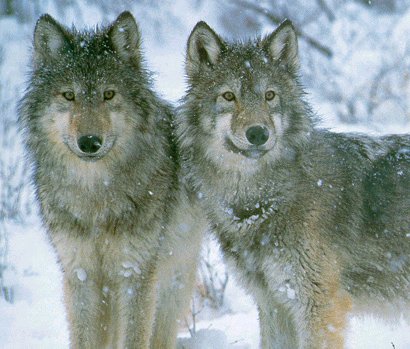|
~SCENT~
Scent plays a very important role in the life of the wolf, by smell alone wolves can locate prey, other pack members or enemies. It can tell them if other wolves were in the territory, if they were male or female, and how recently they visited.
The sense of smell in the wolf is highly developed, as would be expected in an animal possessing numerous scent glands. The distance at which any scent can be detected is governed by atmospheric conditions but, even under the most favorable conditions 1.75 miles denotes a particularly keen sense of smell. The wolves usually travel until they encounter the scent of some prey species ahead of them. They then move directly toward their prey in an effort to capture it.
~HEARING~
Next to smell, the sense of hearing is the most acute of the wolf's senses. Wolves can hear as far as six miles away in the forest and ten miles in the open. Wolves can hear well up to a frequency of 25 khz. Some researchers believe that the actual maximum frequency detected by wolves is actually much higher, perhaps up to 80 khz (the upper auditory limits for humans is 20 khz), also according to some naturalist wolves' hearing is greater than that of the dog. 
|

